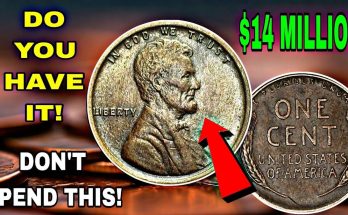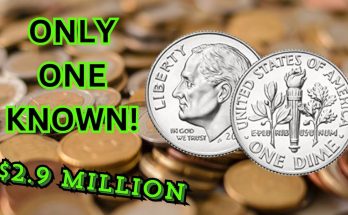A $1 bill in circulation in the United States could be worth $29,900 or more. The specimen is called the “Star Note” and the feature that makes it so valuable is a star symbol printed alongside the serial number. It may be well worth your time to learn the distinctions that make notes and coins worth far more than their denomination and look closely at each one that crosses your palm.
Star Note goes for a small fortune at auction in 2008
A TikTok channel called TreasureTown that’s run by a rare coin and banknote collector shared a clip about the Star Note that was auctioned for such a hefty figure in 2008. One of the notable aspects of the $1 bill is that it’s clearly worn and three fold lines can be seen in photos of the specimen. Other than the small star in the right place, it looks like any other American $1 note.
This is noteworthy because bills in better condition tend to fetch higher amounts. So, in theory, similar Star Notes that crop up in the future will be more valuable if they are in better condition, even marginally.
The other reason why this is interesting is that the note has clearly changed hands and been circulated as standard currency, meaning that people would have spent this as a mere dollar while being unaware of its value.
Where is the star on the Star Note and why is it there?
Another name for the Star Note is the Replacement Note. The US Bureau of Engraving and Printing (BEP) uses the star symbol to indicate that the specimen is a replacement for an incorrectly produced or damaged bill, which would have been picked up in an inspection before the series was released into circulation.
The only difference between these notes and standard ones is that where there is normally a letter at the end of the serial number, the BEP marked these bills with a star instead.
There’s an extra printing error on the $29,900 specimen
If you look closely at the $1 Star Note, you will notice a star symbol printed at the end of the serial number to the left of George Washington’s face. The particular note sold in 2008 was made even more valuable by the fact that it only had a star in the serial number on one side of the bill, whereas it’s usually on both. This was due to a printing error; as many people in numismatics know, this is almost certain to increase the value of a coin or banknote.
A listing for the specimen auctioned in 2008 states:
“This is definitely a dramatic mismatch as the left side of this Web note from run 12 with plate combo 2-1 has the F* block and the right side displays the F-L block. The “*” is the incorrect part of the serial number as it was mistakenly put in the numbering wheel suffix position instead of another “L” suffix by the press operator. Earlier, a “*” slug was accidentally put into the “L” slug letter bin in order to put these actions into motion. This is the only known mismatch of a star note and a regular note.”
Some common features that make banknotes or coins more valuable
There are a number of things that amateur numismatists can look out for in currency that may make it worth more than the currency value:
- Low serial numbers: The low end of the eight-digit serial numbers are sought-after by collectors, such as 00000001, and other numbers on the low end of the scale.
- Patterns, consecutive numbers, and repeated digits: These also add value, such as 11111111, or 12345678.
- Printing errors: These could be misaligned prints, missing seals, or notes with ink smudges.
- Cutting errors: These could have blank spots or be cut incorrectly.
- Star Notes: These feature s star at the end of the serial number.
- Historical issues: These coincide with a particularly significant point in US history.
- Age: Older notes are more valuable, particularly if they are considered in “good” condition.
- Discontinued denominations: These include $500, $1,000, $5,000, and $10,000 denominations, which are no longer produced.
- Experimental notes: Examples of these are the Hawaii or North Africa prints from World War II.



